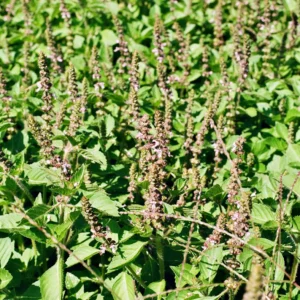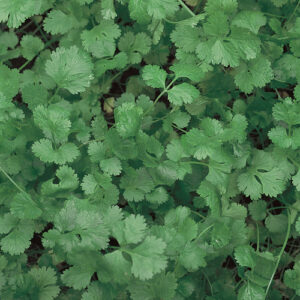Flash variety of collards
Description of Flash variety of collards
The Flash variety of collards is distinguished by its vibrant green, smooth leaves that have a slightly savoyed texture. This hybrid variety is known for its rapid growth, hence name “Flash.” It produces an abundant harvest of tender, flavourful leaves in a relatively short time, making it popular among home gardeners and commercial growers alike. Flash collards have a mild, sweet flavour, making them versatile for various culinary applications. They are often used in salads, stir-fries, soups, and as a nutritious side dish. Additionally, Flash collards are valued for their high nutritional content, providing vitamins, minerals, and antioxidants. Overall, they are a reliable and rewarding choice for those looking to grow collards with exceptional taste and texture.
Planting instructions for flash variety of collards.
To plant Flash variety of collards, follow these steps:
- Choose the Right Location: Select a sunny spot in your garden with well-draining soil. Collards prefer full sun but can tolerate partial shade.
- Prepare the Soil: Collards thrive in fertile, loamy soil with a pH between 6.0 and 7.5. Work the soil to a depth of at least 6 to 8 inches and amend with compost or well-rotted manure to improve soil structure and fertility.
- Planting Seeds or Transplants: You can start Flash collards from seeds or transplants. If planting seeds, sow them directly into the garden soil, about ¼ to ½ inch deep. Space the seeds 12 to 18 inches apart in rows that are 18 to 24 inches apart. Alternatively, you can start seeds indoors 4 to 6 weeks before the last frost date and transplant seedlings outdoors once they have a few sets of true leaves.
- Watering: Keep the soil consistently moist, especially during dry periods. Water deeply to encourage strong root growth. Avoid overhead watering to prevent the spread of diseases.
- Fertilizing: Collards are moderate feeders. Apply a balanced fertilizer (such as 10-10-10) or compost when the plants are about 6 inches tall, and again when they start to form heads.
- Thinning: Once the seedlings emerge, thin them to the strongest plants, leaving the desired spacing between them.
- Mulching: Apply a layer of organic mulch, such as straw or shredded leaves, around the plants to conserve moisture, suppress weeds, and maintain soil temperature.
- Pest and Disease Management: Monitor for pests like cabbage loopers, aphids, and cabbage worms. Handpick pests or use organic insecticidal soap if necessary. Practice crop rotation to reduce the risk of diseases.
- Harvesting: You can start harvesting outer leaves when they are large enough to eat, usually around 50 to 70 days after planting. Cut leaves from the bottom of the plant, leaving the center intact to continue producing new growth.
Description of Flash variety of collards
The Flash variety of collards is distinguished by its vibrant green, smooth leaves that have a slightly savoyed texture. This hybrid variety is known for its rapid growth, hence name “Flash.” It produces an abundant harvest of tender, flavourful leaves in a relatively short time, making it popular among home gardeners and commercial growers alike. Flash collards have a mild, sweet flavour, making them versatile for various culinary applications. They are often used in salads, stir-fries, soups, and as a nutritious side dish. Additionally, Flash collards are valued for their high nutritional content, providing vitamins, minerals, and antioxidants. Overall, they are a reliable and rewarding choice for those looking to grow collards with exceptional taste and texture.
Planting instructions for flash variety of collards.
To plant Flash variety of collards, follow these steps:
- Choose the Right Location: Select a sunny spot in your garden with well-draining soil. Collards prefer full sun but can tolerate partial shade.
- Prepare the Soil: Collards thrive in fertile, loamy soil with a pH between 6.0 and 7.5. Work the soil to a depth of at least 6 to 8 inches and amend with compost or well-rotted manure to improve soil structure and fertility.
- Planting Seeds or Transplants: You can start Flash collards from seeds or transplants. If planting seeds, sow them directly into the garden soil, about ¼ to ½ inch deep. Space the seeds 12 to 18 inches apart in rows that are 18 to 24 inches apart. Alternatively, you can start seeds indoors 4 to 6 weeks before the last frost date and transplant seedlings outdoors once they have a few sets of true leaves.
- Watering: Keep the soil consistently moist, especially during dry periods. Water deeply to encourage strong root growth. Avoid overhead watering to prevent the spread of diseases.
- Fertilizing: Collards are moderate feeders. Apply a balanced fertilizer (such as 10-10-10) or compost when the plants are about 6 inches tall, and again when they start to form heads.
- Thinning: Once the seedlings emerge, thin them to the strongest plants, leaving the desired spacing between them.
- Mulching: Apply a layer of organic mulch, such as straw or shredded leaves, around the plants to conserve moisture, suppress weeds, and maintain soil temperature.
- Pest and Disease Management: Monitor for pests like cabbage loopers, aphids, and cabbage worms. Handpick pests or use organic insecticidal soap if necessary. Practice crop rotation to reduce the risk of diseases.
- Harvesting: You can start harvesting outer leaves when they are large enough to eat, usually around 50 to 70 days after planting. Cut leaves from the bottom of the plant, leaving the center intact to continue producing new growth.





